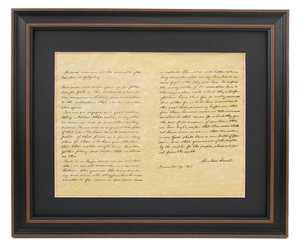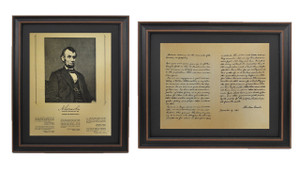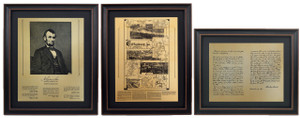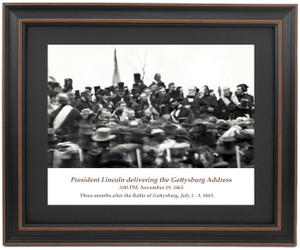
Framed Bill of Rights & Lincoln's Gettysburg Address Set
Patriot Gear
$224.76
Product Description:
- Proudly handmade in the USA
- Wood Frame with Mat, Paper Duster Backing with Wire Hanger
- Printed on antique parchment paper that goes through an 11 step process to give it an aged authentic look. Each paper is unique with characteristics such as (but not limited to), golden or yellow hues, crinkling, puckering.
- Bill of Rights frame measures approx. 19" wide x 21 1/2" tall (font size approx. 12pt script)
- Abe Lincoln's Gettysburg Address frame measures approx. 19 1/2" wide x 16 3/4" tall (font size approx. 14pt script)
Product Details:
This value set includes
- The Bill of Rights is the first ten amendments to the U.S. Constitution, ratified on December 15, 1791. It was introduced to guarantee individual freedoms and limit government power, addressing concerns raised during the ratification of the Constitution.
- The Gettysburg Address: Lincoln delivered this speech at the dedication of the Gettysburg National Cemetery, honoring those who died in the Battle of Gettysburg (July 1863). The speech is just 272 words but is considered one of the greatest speeches in American history. Lincoln redefined the purpose of the Civil War, emphasizing equality, liberty, and democracy. The phrase “government of the people, by the people, for the people” became a defining principle of American democracy.

We stand behind the quality and craftsmanship of our products.








